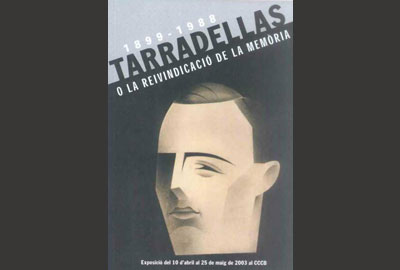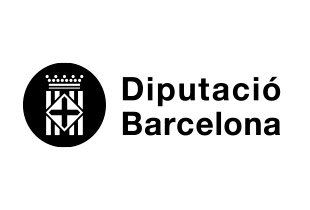Exhibition
1899 - 1988. Tarradellas or the importance of memory
Exhibition about the figure of the man who was President of the provisional Generalitat [Catalan Regional Government], and of the Diputació [Provincial Council], to mark the 25th anniversary of his return to Catalonia and the restoration of the Generalitat, and coinciding with the opening of his personal archives, based at the monastery of Poblet.
This exhibition sets out not just to highlight political, personal and family aspects of the man, but also the major transformations that took place in Catalonia in the twentieth century, attaching particular importance to the role of the left-wing Catalan autonomy movement at that time.
'1899-1988 Tarradellas or the importance of memory' comprises seven different spaces including previously unshown material about this period, mostly on loan from the Montserrat Tarradellas i Macià Archives, which Tarradellas created personally and donated to the monastery of Poblet in late 1981. The archives are currently open for consultation to historians and professionals, and will be open to the general public in 2016, as Tarradellas stipulated for after the death of his wife, Antònia Macià. They contain over two million pages of documents, 33,000 photographs and audiovisual documents (38 films), most of which are previously unshown, and Tarradellas' personal library. The curator of the exhibition, which basically draws on the Archives, is the Professor of Contemporary History at the University of Barcelona, Jordi Casassas.
Curators: Jordi Casassas
The exhibition is based on a layout of seven sections representing the life of Josep Tarradellas, alongside the transformation process of the Catalonia of the twentieth century. It is laid out in the following sections:
ENTRANCE
During World War II, and for as long as the international situation made it necessary, the parents of Josep Tarradellas kept their son's personal archives in sealed containers buried in the vineyards of the family property in Saint-Martin-le-Beau. Here in the entrance, visitors find basic information about the Archives in a setting that evokes the place where the documents were hidden.
Section I: the creation of a personality
The first space is based on three audiovisuals. The first invites reflection on Tarradellas the man, in accordance with the approach explained above. The second deals with the context: the contradictory, violent, modern and cosmopolitan Barcelona of the 1920s and 30s. And the third is strictly biographical and personal in content, from his birth until his marriage and the birth of his first daughter, as well as taking a look at his professional life.
Tarradellas very quickly made an impression on people - for his strong personality, for his restless energy, for his serious, persuasive character, for his insistence and his capacity for work and for his physical characteristics, particularly his great height, which was unusual for the time and quite imposing. The exhibition presents a singular character and his particular professional career. Tarradellas had a modus vivendi which, at least until the end of the Spanish Civil War, allowed him to live comfortably.
Section II: the struggle for public and political space
This section presents the most relevant events from the proclamation of the Republic on 14 April 1931 to the outbreak of the Spanish Civil War. It combines the presentation in display cases of objects and archive documents with a chronological description on panels. Here we see the political importance that Tarradellas acquired at this time in the governments of both Macià and Lluís Companys, and despite differences with his own party, Esquerra Republicana de Catalunya. Among the items on show, particular mention should be made of the senyera, the Catalan flag, that was wrapped around the urn containing the heart of President Francesc Macià, and the documents recording rehabilitation work on the Palau de la Generalitat and the Catalan Parliament. An audiovisual presents the proclamation of the Republic.
Section III: political tensions and social violence: the Civil War years
In a first space, the exhibition presents many of the posters from the war years that have been preserved in the Montserrat Tarradellas i Macià Archives. This is followed by a sloping platform, an unnerving space where seating for visitors is made up of the sacks used to form trenches.
This space is based on three audiovisuals. The first presents the life of Tarradellas during this period, particularly his responsibility for organising the rearguard. The second refers to two of the great challenges facing Tarradellas during the war: the organisation of the War Industries Commission, and mass communication. The third projection is the film Màrtirs de Catalunya [Martyrs of Catalonia], presented at the Universal Exhibition in Paris in 1937, about the bombing of Barcelona.
Section IV: the loneliness of a long-distance runner
The staging of this space plays on the large-format reproduction of some of the 83,085 letters received and sent, and now preserved in the Montserrat Tarradellas i Macià Archives, most of them dating from Josep Tarradellas' 38 years of exile. Visitors will also see the writing table at which he worked and the typewriter on which Tarradellas wrote in his study in Saint-Martin-le-Beau.
Two audiovisuals present us with the collective drama of thousands and thousands of Catalan exiles, and with Tarradellas' life over this long period during which, in August 1954, in Mexico, he was elected President of the Generalitat de Catalunya in exile.
Section V: the rebellion of the past and transactions with the present
This space, designed as a small museum of the transition to democracy where the exhibits are the remains of a popular demonstration, takes a look at the events that took place from the death of Franco up until Tarradellas was reinstated as President.
The chronology that complements the entire exhibition is especially significant here, with a detailed exposition of the events of the three long months leading up to his return, in October 1977. This space evokes the best-known moment of that time: the day of his return, and the first sentences he spoke in the Plaça de Sant Jaume.
A final audiovisual restores to memory the value and meaning of the first Tarradellas government, made up of members of all the Catalan parties with parliamentary representation. Here, for the first time, his political testament is published.
Section VI: a personal reassessment
In this space visitors are invited to sit in three conventional living rooms, evoking a family atmosphere where they can watch news reports showing Tarradellas' last years during which time he was frequently in the news.
One of these rooms, with its green armchairs, is furnished entirely with the original furniture from the Tarradellas family apartment in Carrer de Balmes. Here, visitors can sit and watch, from the President's very own armchair, some of the most interesting interviews he gave.
Section VII: the Montserrat Tarradellas i Macià Archives
To close, the exhibition presents a sample of the archives themselves. The pieces are exhibited with no other accompaniment than a brief reference. Here, after making their way around the exhibition, it is the visitors who make contact with each of the documents on show, which they will now be able to situate in context.


